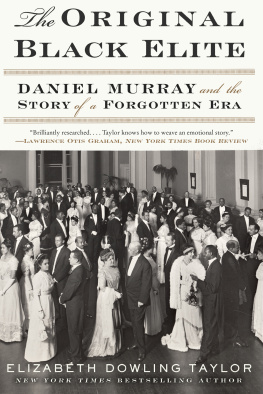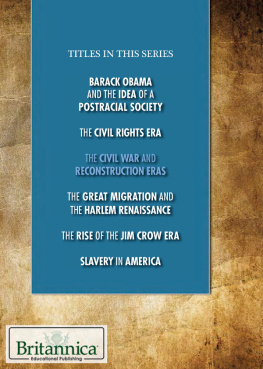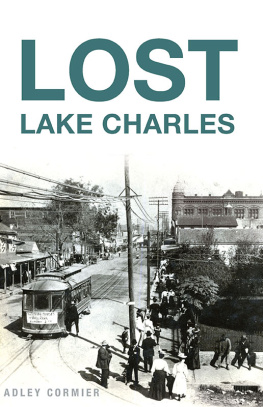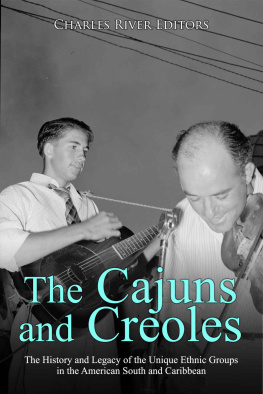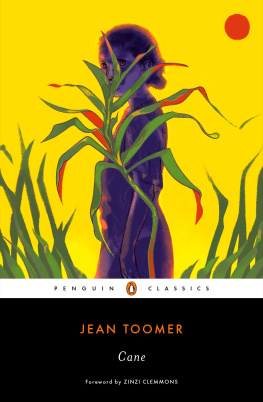THE FORGOTTEN PEOPLE
THE FORGOTTEN PEOPLE
Cane Rivers Creoles of Color
GARY B. MILLS
Revised Edition by Elizabeth Shown Mills
Foreword by H. Sophie Burton

LOUISIANA STATE UNIVERSITY PRESS
BATON ROUGE
Published by Louisiana State University Press
Copyright 1977, 2013 by Louisiana State University Press
All rights reserved
Manufactured in the United States of America
First printing
DESIGNER: Michelle A. Neustrom
TYPEFACES: Ingeborg, text; Filosofia, display
PRINTER AND BINDER: Maple Press
LIBRARY OF CONGRESS CATALOGING-IN-PUBLICATION DATA
Mills, Gary B.
The forgotten people : Cane Rivers Creoles of color / Gary B. Mills ; foreword by H. Sophie Burton. Revised edition / by Elizabeth Shown Mills.
pages cm
Includes bibliographical references and index.
ISBN 978-0-8071-3713-0 (pbk. : alk. paper) 1. CreolesLouisianaCane River Region. 2. Cane River Region, La. History. 3. Natchitoches Parish (La.) History. I. Title.
F377.N4M54 2013
976.3'65dc23
2013014275
The paper in this book meets the guidelines for permanence and durability of the Committee on Production Guidelines for Book Longevity of the Council on Library Resources.
To Hazel Cecilia Rachal Mills,
who taught us to appreciate Cane River and its culture
CONTENTS
CHARTS, TABLES, AND MAPS
GENEALOGICAL CHARTS
COMPARATIVE TABLES
MAPS
following first photo essay
FOREWORD TO THE REVISED EDITION
I t was with great pleasure that I accepted the honor of writing a foreword for the revised edition of Gary Millss The Forgotten People. After its publication, Millss book stood as the only historical scholarship about the town of Natchitoches for decades. When I set out to write my dissertation, which was a socioeconomic study of colonial Natchitoches, Millss work was the only well-researched secondary work available. It was lagniappe that Millss book proved to be well written and engrossing.
Drawing on an abundant array of sources, including official correspondence, court records, notarial documents, and sacramental registers, Mills focuses on Cane River, a district in Natchitoches. He shows how the descendants of the Cane River free people of color, or gens de couleur libres, began a colony in the eighteenth century in large part because of the efforts of a black woman named Marie Thrse, also known by her sobriquet of Coin-coin. She had fifteen children, ten of whom were born of her union with a white planter named Claude Thomas Pierre Metoyer. She ceased living with Metoyer about 1786, and less than ten years later three of her sons moved downriver to the Isle Brevelle section of Cane River, where they came to constitute the core of the colony of free people of color. Because the Metoyers worked hard and tended to marry other free people of color, these Cane River Creoles became an economically and socially successful group. Mills follows the communitys story into the nineteenth century, showing how their intermediate racial status in Louisiana changed during the first half of the nineteenth century.
At the time of its publication in 1977, The Forgotten People was unique among the many historical studies of the colonial and antebellum history of the South and free people of color in particular. Although a few previous studies had focused on free blacks in New Orleans, the free people of color of rural Louisiana had received little attention despite the groups significant numbers and economic importance. Moreover, the majority of work on free people of color tended to focus on the antebellum period alone, while Mills chose to begin in the eighteenth century and follow the story through to the Civil War.
The Forgotten People fits into the larger trend in 1970s colonial and regional historiography that strongly emphasized slavery and related subjects such as free people of color. Mills, like other scholars, had to perform a delicate balancing act while recounting the experiences of the Cane River Creoles. On the one hand, he wanted to show that people living under restrictive legal, social, and cultural circumstances were still active members of society, not passive victims. On the other hand, he had to avoid overem-phasizing black and multiracial agency in bondage as this could minimize and thus misrepresent the harsh nature of slavery. Moreover, Mills had a more complicated task than most historians of slavery because many Cane River Creoles actively benefited from the plantation system and became local elites. In the end, Mills skillfully demonstrated how his protagonists, albeit caught in an ambiguous situation, negotiated the succession of slave regimes in Natchitoches with a mixture of dignity and pragmatism.
For decades, The Forgotten People remained the only well-researched history on this important town in northwest Louisiana. Millss study reshaped the ways in which scholars viewed Natchitoches and inspired more research into free people of color and slaves in Louisiana. I was therefore surprised to find that much of the scholarly community overlooked the book at the time of its publication. While the few contemporary reviewers were complimentary, this lack of attention appears egregious in light of the works subsequent influence. Perhaps this book escaped the attention of the historical profession because of the abundance of studies of antebellum communities and of free blacks in the late 1970s. Perhaps, more ominously, this book was neglected because it dealt with Louisiana and in particular with the states nonEnglish-speaking colonial history. Like all histories of French and Spanish colonial regions that later fell under United States sovereignty, Louisianas history challenged the East Coast and Anglo-Saxon bias within the historical profession, which tended to focus solely on the English colonial experience. Clearly, however, the impact of Millss book on the historical profession has grown since its publication, and with good reason.
The Forgotten People challenged the predominant notion that the French and later Spanish town was an outpost devoted to the Indian trade, and showed that the district also became a plantation center. In 1977 the only major publication that dealt with colonial Natchitoches was a compilation of sources edited by Herbert Eugene Bolton.
Millss book also formed part of an important shift in historiography that stressed Louisiana as a colony in its own right within the French colonial world and then the Spanish empire. Before the 1970s, scholarship tended to portray the large population of free people of color in Louisiana as merely one more component of the exceptional and exotic nature of Louisiana. Because of the predominance of British colonial research in the field of history at that time and the status of Louisiana as one of fifty states in the United States, work about this colony had tended to draw parallels with British North America. Such comparisons inevitably led to a view that the Gulf Coast was unusual or singular. Most research avoided this conundrum by ignoring the colonial era and focusing on the antebellum period. As a result, many nonEnglish-speaking regions acquired an undeserved reputation of uniqueness. Scholarship in the 1970s, including Millss book, began to attribute the differences between the Gulf Coast regionincluding New Orleans and interior Louisianaand the rest of mainland North America to the French and Spanish cultural legacies of the colonial period and to study this heritage in its own right. In keeping with the work of his contemporaries, Mills explicitly sought to examine Louisiana as a component of the colonial French and Spanish regimes.
Next page

